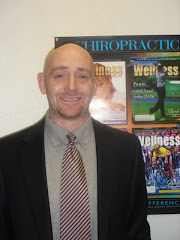Wednesday, January 9, 2008
Big Dreams
Big dreams, big challenges, big accomplishments. I am commited to providing quality health products and information to others. I have a vision and determination to help improve the health, lifestyle and longevity of all I come in contact with. Having suffered in my youth from poor health, I know the challenges that many people are faced with. I also know that through quality products and a knowledge of the power of human energy one can create a healthy lifestyle.
Wednesday, January 2, 2008
Theory and Treatment of Winter Depression
Seasonal Affective Disorder (SAD) was named in the 1980’s to describe the depression that some people feel as the days shorten in fall and winter. Seasonal depression is thought to be more common and longer lasting at high latitudes, so it appears to be the result of changes in the length of day.
But more than lost sunlight may be involved. Many physiological rhythms – sleep and waking, body temperature, energy – are also adjusted daily by synchronization with the sun. Cells in the retina of the eye transmit evidence of changes in light to a pacemaker in the part of the brain called the suprahchiasmatic nucleus, which controls some of these body rhythms. According to a popular theory, this internal clock does not adjust properly to later dawns and early sunsets in people with seasonal affective disorder.
An effective treatment for seasonal affective disorder has been to expose an individual to fluorescent lights mounted on a metal reflector. This light box can sit on a stand or tabletop. An individual will sit nearby the light box for anywhere from a half-hour to two hours per day. In another version, lights can be attached to a visor worn on the forehead.
Experts recommend an intensity of 10,000 lux, which is similar to early morning light. Morning light is usually preferred, as it supposed to reset the body’s internal clock.
Other potentially effective ways to treat seasonal affective disorder are antidepressant medications, such as Prozac, Zoloft or Celexa and even the herbal St. John’s Wort.
SOURCE: HARVARD MENTAL HEALTH LETTER Nov. 2004, Vol. 21, No. 5, pp. 4-5
But more than lost sunlight may be involved. Many physiological rhythms – sleep and waking, body temperature, energy – are also adjusted daily by synchronization with the sun. Cells in the retina of the eye transmit evidence of changes in light to a pacemaker in the part of the brain called the suprahchiasmatic nucleus, which controls some of these body rhythms. According to a popular theory, this internal clock does not adjust properly to later dawns and early sunsets in people with seasonal affective disorder.
An effective treatment for seasonal affective disorder has been to expose an individual to fluorescent lights mounted on a metal reflector. This light box can sit on a stand or tabletop. An individual will sit nearby the light box for anywhere from a half-hour to two hours per day. In another version, lights can be attached to a visor worn on the forehead.
Experts recommend an intensity of 10,000 lux, which is similar to early morning light. Morning light is usually preferred, as it supposed to reset the body’s internal clock.
Other potentially effective ways to treat seasonal affective disorder are antidepressant medications, such as Prozac, Zoloft or Celexa and even the herbal St. John’s Wort.
SOURCE: HARVARD MENTAL HEALTH LETTER Nov. 2004, Vol. 21, No. 5, pp. 4-5
Subscribe to:
Comments (Atom)


